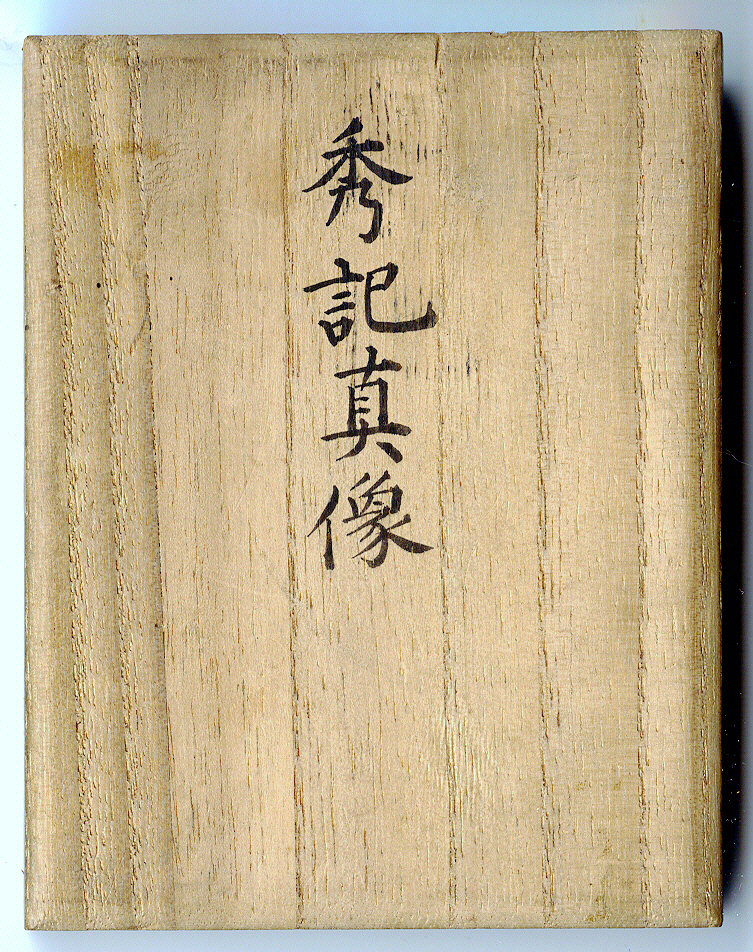A Samurai

We are pleased to offer an exceptional, rare Japanese ambrotype of a Samurai. Dressed in traditional style with a kimono that has small fans printed on the sleeve and chest this intense warrior is posed sitting on the floor. He has two swords one visible in his obi or sash. The other sword rests on the floor with his hand nearby ready for access. We see writing on the wall behind him however our source wasn’t able to translate it. According to them, however, the text on the exterior of the case reads “An excellently recorded true image” while on the inside the two right-hand columns read “from right” ‘Meiji 4. Year of Sheep (1871), Photographed April 16th’. $6000
-------------------------------------
For an interesting side note of this time according to the http://www.meijishowa.com, “On August 9, 1871 (Meiji 4), the Japanese government issued the danpatsurei (断髪令, Cropped Hair Edict), encouraging samurai to cut their distinctive chonmage topknot. It created a minor photography boom when samurai rushed to photo studios to get their photo taken before their chonmage was cut off. As a result of the edict, Western hair styles, called zangiri (散切り), became increasingly popular. This became a powerful symbol of the dramatic change overtaking Japanese society.
True reformation of the samurai system started when on January 10, 1873 (Meiji 6), the samurai’s right to be the only armed force was abolished and replaced by a modern, western-style, conscripted army. The new system was called chouheirei (徴兵令, Conscription Ordinance) and was the beginning of the end of the samurai system in Japan.
Samurai now became shizoku (士族). They retained some of their salaries, paid for by the government, but these were so low that many samurai were forced to find new employment.
On March 28, 1876 (Meiji 9), samurai lost their right to wear swords. After that date, only military and police officers could wear swords. This is known as the haitorei (廃刀令, Sword Abolishment Edict). As a result of the haitorei, many Japanese sword smiths lost their job or turned to the production of farming implements and kitchen cutlery.
On August 5, 1876 (Meiji 9), the government stipends were permanently suspended and samurai were required to convert them into interest-bearing government bonds (金禄公債, kinroku kosai). This measure was called chitsuroku shobun (秩禄処分, stipend measure) and was the final nail in the coffin of the samurai system.”
This spectacular ambrotype truly stands as is but if there is something special with the translation behind him this could take this piece to a whole other level. The image is in excellent condition with very nice tones and contrast. A couple of very light extremely small scratches and a discoloration line seen on the bottom perimeter. With the mat it measures 3” x 4” however the actual image itself is 2 3/8” x 3 ½” and the exterior of the case measures 3 ½” x 4 ½.” The case is also in excellent condition with no visible cracks and the top fits perfectly to the bottom.


